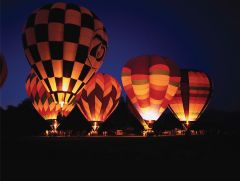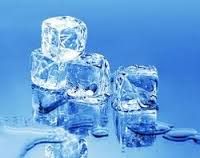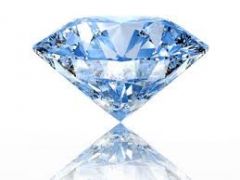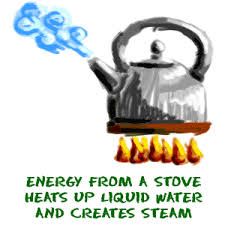![]()
![]()
![]()
Use LEFT and RIGHT arrow keys to navigate between flashcards;
Use UP and DOWN arrow keys to flip the card;
H to show hint;
A reads text to speech;
64 Cards in this Set
- Front
- Back
|
___________ is the study of matter, it's properties, and changes it undergoes. |
Chemistry (central science) |
|
|
____________ is anything that has mass and takes up space. |
Matter |
|
|
__________ are characteristics that can be used to describe a substance. (size, color, taste, smell, temp) |
Properties |
|
|
What are the 2 types of properties and what do they do? |
chemical composition- what matter is made of chemical reactivity- how matter behaves |
|
|
What are the 3 states of matter? |
Gas Liquid Solid |
|

_________ is a substance with definite shape and volume. |
gas |
|

___________ is a substance with volume but changes shape. |
Liquid |
|

___________ is a substance with shape and volume that cannot change. |
Solid |
|

A conversion of a substance from one state into another is called ___________. |
change of state |
|
|
Give an example of physical change. (physical change is reversible) |
melting ice to water chopping wood burning a candle dissolving sugar into water breaking a glass boiling water |
|
|
Give an example of chemical change. (chemical change is irreversible) |
rusting of iron burning wood cooking an egg baking a cake explosion of fireworks rotting banana |
|
|
What are the 4 types of physical change? |
1. change of state (boiling water, freezing water into ice) 2. change of appearance (dissolving sugar into water) 3. change of shape (hammering a gold nugget into a gold leaf) 4. change of size |
|
|
What are the 4 types of chemical change? |
1. gas release (bubbles) 2. light or the release of energy. 3. formation of precipitate (a solid (color) forms upon mixing 2 liquids (colors) together). 4. permanent color change |
|
|
what are the 2 classifications of matter? |
1. pure substance (sugar and water) 2. mixtures (heterogenous and homogenous) |
|
|
Is a Coke a cola homogenous or heterogenous? |
homogenous |
|
|
Is concrete homogenous or heterogenous? |
heterogenous |
|
|
What are the 2 types of pure substance? |
element and compounds |
|
|
Can an element be chemically seperated? |
no |
|
|
Can a compound be chemically seperated? |
yes |
|
|
___________ is one type of pure substance (atom). Ex: copper, lead, aluminum |
element |
|
|
Is water an example of an element or a compound? and why? |
water is a compound. it can be seperated into hydrogen and oxygen |
|
|
If you are looking at a periodic table, why are some elements in black? blue? red? |
blacks are solids blues are liquids reds are gases |
|
|
What are the 2 major elements Earth is made of? |
oxygen (45.5%) silicon (27.2 %) |
|
|
The human body is made of 6 elements. What are the 3 major ones in order? |
oxygen (65%) carbon (18%) hydrogen (10%) |
|
|
In a written compound, such as H2O. Where is the number of atoms in that element placed? |
it is written to the right of the element |
|
|
mass is measured in ________________. |
kilograms (kg) |
|
|
length is measured in ____________. |
meters (m) |
|
|
volume is measured in ________________. |
liters (l) or cubic meters aka cc's |
|
|
time is measured in ______________. |
seconds (s) |
|
|
temperature is measured in _______________. |
kelvin (K) |
|
|
1 kilogram = _______ grams |
1000 grams |
|
|
1 gram = _______ kg |
0.001 kg |
|
|
1 milligram = ______ grams |
0.001 g |
|
|
1 microgram = ______ g. |
0.000001 g. |
|
|
kilo (k) = ______ or ______ |
1000 or 10^3 |
|
|
centi (c) = _______ or ______. |
0.01 or 10^-2
|
|
|
milli (m) = ______ or _____ |
0.001 or 10^-3 |
|
|
micro (u) = ________ or ________ |
0.000001 or 10^-6 |
|
|
nano (n) =_______ or ____________ |
0.000000001 or 10^-9 |
|
|
mass measures _______________. |
matter |
|
|
weight measures _____________. |
gravitational pull |
|
|
1000 grams = ____ kg |
1 kg |
|
|
0.001 kilogram = ____ g. |
1 g. |
|
|
0.001 g. = ____ mg. |
1 |
|
|
0.000001 g. = ____ ug.(microgram) |
1 ug (microgram) |
|
|
1 meter = __________centimeters. |
100 cm |
|
|
1 inch = __________ cm |
2.54 cm |
|
|
____________ is the amount of space occupied by a solid, liquid, or gas. |
volume |
|
|
If zero's are in the middle of a number, are they considered sig figs? |
yes 69.08 |
|
|
If zero's are at the beginning of a number, are they considered sig figs? |
no 0.0089 |
|
|
If zero's are at the end of a number and after a decimal point, are they considered sig figs? |
yes 2.50 |
|
|
If there are zero's at the end of a number and there are no decimals, are they considered sig figs? |
maybe 1500kg may have 2,3, or 4 sig figs 25,000 at least 2 sig figs 1500.1 5 sig figs |
|
|
If you're counting something like a dozen eggs, how many sig figs would you have? |
you would have none. Counting = infinity |
|
|
How would you write 2.15 x 1/10^3 in scientific notation? |
2.15 x 10^-3 |
|
|
How would you write 0.0000789 in scientific notation and how many sig figs would you end up with? |
7.89 x 10^-5 3 sig figs |
|
|
How would you write 506707 in scientific notation, and how many sig figs would you end up with? |
5.06707 x 10^5 6 sig figs |
|
|
When _________ and _________ the amount of sig figs allowed in your answer can not exceed the values you are working with. |
multiplying and dividing ex: (5.15cm) (2.3cm) = 11.845cm^2. this answer is incorrect. 2.3 of the problem has the fewest sig figs (2). So your answer can only have 2. The correct answer is 12cm^2 |
|
|
When _________ and __________ the answer cannot have more digits after the decimal point than the numbers you are working with. |
addition and subtraction |
|
|
What are the 3 steps in the unit analysis method? |
1. write down the unit being asked for in the answer. 2. write down the unit given to find the answer. 3. Apply a unit factor to convert the unit given to the unit answer. step 2 x step 3 = step 1 |
|
|
Using the unit analysis method, solve this problem. How many days are in 2.5 years? |
the answer should be 910 days |
|
|
What do you add together to find the temperature in kelvin? |
temperature in C + 273.15 |
|
|
How do you find the temperature in Celscius? |
temperature in kelvin - 273.15 |
|
|
What is the formula to convert Celcious into Farenheight? |
Tf = 1.8 (Tc) + 32 |
|
|
WHat is the formula used to convert Farenheight into Celcious? |
Tc = Tf -32/1.8 |

